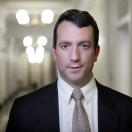
In too many communities across America, residents do not have easy access to a primary health care provider. As a medical student in Baltimore, Maryland, Christin Donnelly has seen the impact that has on families and communities:
“My experiences working in inner city Baltimore and rural western Maryland have shown me how fulfilling it is to provide healthcare for those who need it the most. I enjoy the challenge and believe that I can maximize the wonderful education I have been given by working with these underserved populations.”
Thanks to the Affordable Care Act, more Americans will have access to health care from a compassionate doctor or nurse like Christin – receiving part of $9.1 million in National Health Service Corps funding being distributed to medical students at schools in 30 states and the District of Columbia – who will serve as primary care doctors and help strengthen the health care workforce.
This Students to Service program is just one of many NHSC initiatives receiving funding under the new law. Thanks to the Affordable Care Act and the Recovery Act, communities nationwide are benefiting from the nearly $900 million in scholarships and loan repayments that has almost tripled the number of participants in the National Health Service Corps to include more than 10,000 National Corps members – doctors, nurses and other health care providers.
Other recent health care law investments in training and the placement of thousands of new practicing doctors and nurses into the community include:
- More than $14 million has gone to 45 school-based health centers across the country allowing the number of children served to increase by nearly 50 percent.
- Medicare and Medicaid bonus payments to primary care doctors and nurses will encourage students to enter the field. Increasing primary care physician payment rates in the Medicaid program to match Medicare payment levels in 2013 and 2014 will enhance access to primary care services as the uninsured gain access to medical care.
- A $700 million investment to help build, expand and improve community health centers across the U.S. to provide needed care to low-income Americans.
- Nearly $230 million to increase the number of medical residents, nurse practitioners and physician assistants trained in primary care. In addition, a $200 million demonstration project to help nursing schools and hospitals train advance practice registered nurses such as nurse practitioners, clinical nurse specialists, nurse anesthetists or nurse midwives.
Altogether, these investments mean both that more patients will be able to get the care they need in their community – and that more Americans who want to embark on a career in health care will have access to training and jobs.
Tomorrow, I’m going to meet 400 National Health Service Corps members at their new awardee conference, and I’m excited to thank them for their service to this country. If you have a question about how the Affordable Care Act is going to help promote better access to care and more health care jobs, send it to me through Twitter @JonCarson44.
To read more about how the Affordable Care Act is investing in primary care, click here.


